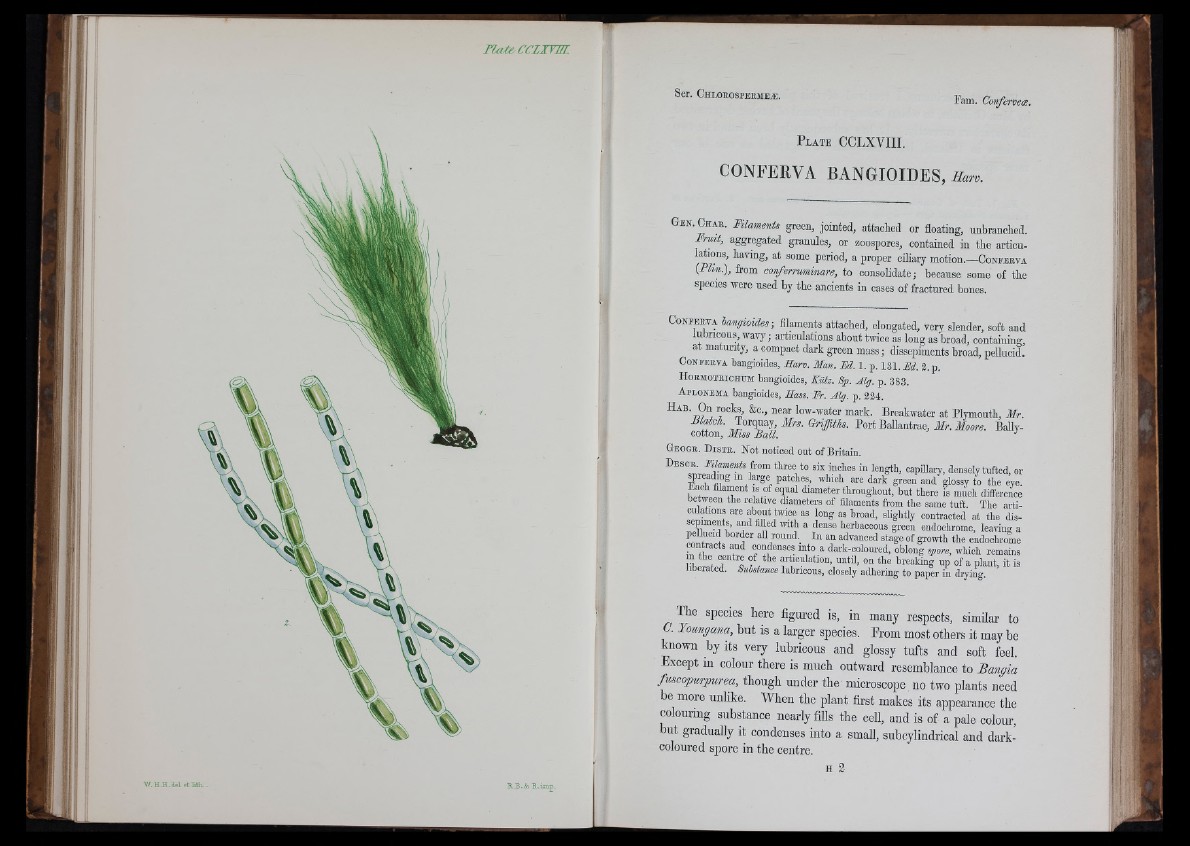
Fiate, c c z iv m :.
P l a t e CCLXVIII.
CONFERVA BANGIOIDES, Harv.
Ge n . Ch a e . FilmnenU green, jointed, attached or floating, unbranched.
ruit, aggregated granules, or zoospores, contained in the articu-
lations, having, at some period, a proper ciliary motion.—Conferva
{F h n ) , from conferruminare, to consoKdate; because some of the
species were used by the ancients in cases of fractured bones.
C o n f e r v a bangioides-, filaments attached, elongated, very slender, soft and
lubricous, wavy; articulations about twice as long as broad, containing,
at maturity, a compact dark green mass; dissepiments broad, pellucid.
Conferva bangioides, Earv. Man. Ed. 1. p. 131. AK. 2, p.
H o r m o t r ic h u m b a n g io id e s , Kiitz. Sp. Alg. p. 3 8 3 .
Aplonema bangioides, Eass. Er. Alg. p. 324.
H a b . On rocks, &c., near low-water mark. Breakwater at Plymouth, Mr.
Blateh. Torquay, Mrs. Griffiths. Port BaUantrae, Mr. Moore. Bally-
cotton, Miss B a ll. ^
Geogr. D is t r . Not noticed out of Britain.
Desor. EilamenU ho-oi three to six inches in length, capillary, densely tufted or
spieading in large patches, which are dark green and glossy to the eye.
Each filament is of equal diameter throughout, but there is much difference
between the relative diameters of filaments from the same tuft. The arti-
|™gi'®Uoad, slightly contracted at the dis-
sepiments, and filled with a dense herbaceous green endochrome, leaving a
peUucid border all round. In an advanced stage of growth the endochrome
contiacts and condenses into a dark-coloured, oblong spore, which remains
lib c^ t 4 articulation, until, on the breaking up of a plant, it is
liberated. Substance lubricous, closely adhering to paper in drying.
Pile species here figured is, in many respects, similar to
C. Toungana, but is a larger species. From most others it may be
known by its very lubricous and glossy tufts and soft feel.
Fxcept in colour there is much outward resemblance to Bangia
fuscopurpurea, though under the microscope no two plants need
be more unlike. When the plant first makes its appearance the
colouring substance nearly fills the cell, and is of a pale colour,
but gradually it condenses into a small, subcylindrical and dark-
coloured spore in the centre.